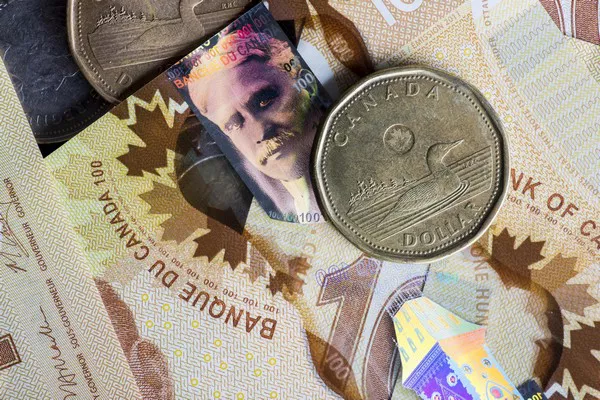The world of currency is often shrouded in mystery and intrigue, with tales of rare denominations and elusive banknotes captivating the imagination. Among the enigmatic legends is the existence of a $1000 Canadian bill—a denomination whispered about in hushed tones, yet seldom seen. In this article, we embark on a journey to uncover the truth behind this elusive banknote, exploring its history, significance, and the myths that surround it.
The History of Canadian Currency
Early Currency in Canada
Canada’s monetary system has a rich and complex history, dating back to its colonial roots. In the early years, various currencies circulated within the Canadian territories, including British pounds, Spanish dollars, and colonial issues.
Establishment of the Canadian Dollar
The modern Canadian dollar, denoted by the symbol “CAD” and the ISO code “CAD,” was established in 1858. With the passage of the Uniform Currency Act in 1871, Canada officially adopted the Canadian dollar as its sole legal tender, laying the foundation for a unified national currency.
The Myth of the $1000 Canadian Bill
Origins of the Myth
The legend of the $1000 Canadian bill traces its origins to the early 20th century when high-denomination banknotes were in circulation in Canada and other countries. Tales of wealthy individuals and clandestine transactions fueled the mystique surrounding these rare banknotes, including the elusive $1000 denomination.
The Reality Check
Despite persistent rumors and urban legends, there is no evidence to suggest that a $1000 Canadian bill ever existed as a legal tender issued by the Bank of Canada. While Canada did issue high-denomination banknotes in the past, such as the $1000 and $500 bills, these were discontinued decades ago, leaving behind only memories and collectible items.
Understanding High-Denomination Banknotes
Historical Context
High-denomination banknotes, including the $1000 bill, were once a common feature of Canada’s currency system, serving primarily as tools for interbank transactions and large-scale financial dealings. These banknotes played a crucial role in facilitating commerce and trade during a time when electronic transactions were not yet commonplace.
Discontinuation of High-Denomination Banknotes
In the late 20th century, concerns over money laundering, tax evasion, and illicit activities prompted governments worldwide to phase out high-denomination banknotes, including those in Canada. In 2000, the Bank of Canada ceased the issuance of banknotes larger than $100, effectively ending the era of high-denomination currency in Canada.
The Legacy of the $1000 Canadian Bill
Collectors’ Appeal
Despite being out of circulation for decades, high-denomination Canadian banknotes, including the $1000 bill, remain highly sought after by collectors and numismatists. The rarity and historical significance of these banknotes contribute to their allure, with collectors willing to pay premium prices to add them to their collections.
Legal Status
While the $1000 Canadian bill may hold value as a collectible item, it is important to note that it is no longer recognized as legal tender by the Bank of Canada. As such, these banknotes cannot be used for transactions or exchanged for goods and services, serving solely as artifacts of Canada’s monetary history.
Exploring the Future of Canadian Currency
Modern Currency Trends
As Canada embraces digital payments and explores innovative financial technologies, the future of Canadian currency continues to evolve. The rise of contactless payments, mobile wallets, and cryptocurrencies signals a shift towards a cashless society, prompting discussions about the role of physical currency in the digital age.
Financial Inclusion
While digital payments offer convenience and efficiency, they also raise concerns about financial inclusion and accessibility, particularly for marginalized communities and individuals without access to banking services. As Canada navigates this digital transformation, policymakers must ensure that all citizens have equitable access to financial services and opportunities.
See Also: Converting Yen to CAD – Just 6 Steps!
Navigating FAQs About the $1000 Canadian Bill
FAQ 1: Is the $1000 Canadian bill still legal tender?
No, the $1000 Canadian bill is no longer recognized as legal tender by the Bank of Canada. It was discontinued and withdrawn from circulation in 2000.
FAQ 2: How rare is the $1000 Canadian bill?
The $1000 Canadian bill is exceptionally rare, as it has been out of circulation for decades. While some specimens may still exist in private collections or museums, they are considered valuable collectible items rather than usable currency.
FAQ 3: What is the value of a $1000 Canadian bill?
The value of a $1000 Canadian bill depends on various factors, including its condition, rarity, and demand among collectors. In general, well-preserved specimens in good condition command higher prices in the numismatic market.
FAQ 4: Where can I see a $1000 Canadian bill?
$1000 Canadian bills can sometimes be found on display in museums, numismatic exhibitions, or private collections. However, they are not readily accessible to the public for everyday viewing.
FAQ 5: Why were high-denomination banknotes discontinued in Canada?
High-denomination banknotes, including the $1000 Canadian bill, were discontinued due to concerns about their potential use in illegal activities such as money laundering, tax evasion, and organized crime. Discontinuing these banknotes was part of a broader effort to enhance transparency and combat financial crime.
Conclusion
In conclusion, the myth of the $1000 Canadian bill serves as a reminder of the intrigue and fascination surrounding rare currency denominations. While tales of wealthy individuals and clandestine transactions may capture the imagination, the reality is that the $1000 Canadian bill is nothing more than a relic of a bygone era in Canada’s monetary history. As we navigate the complexities of modern finance, it is important to separate fact from fiction and appreciate the legacy of Canada’s currency system for what it truly is—a reflection of the nation’s evolution and resilience.


